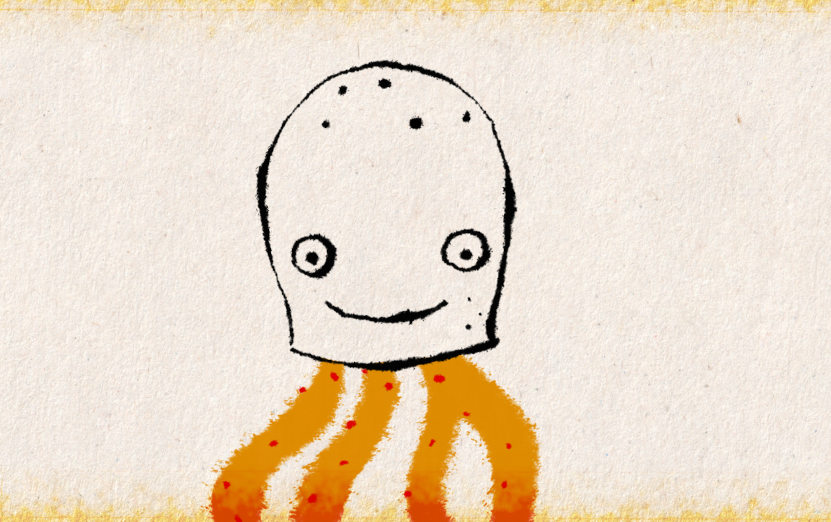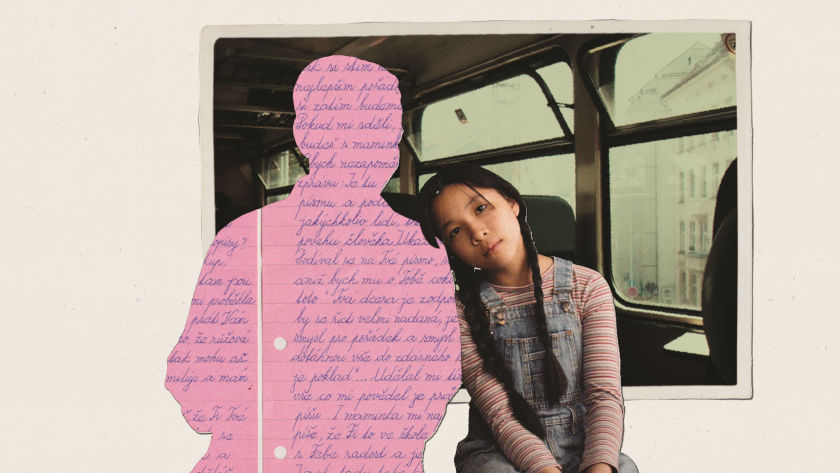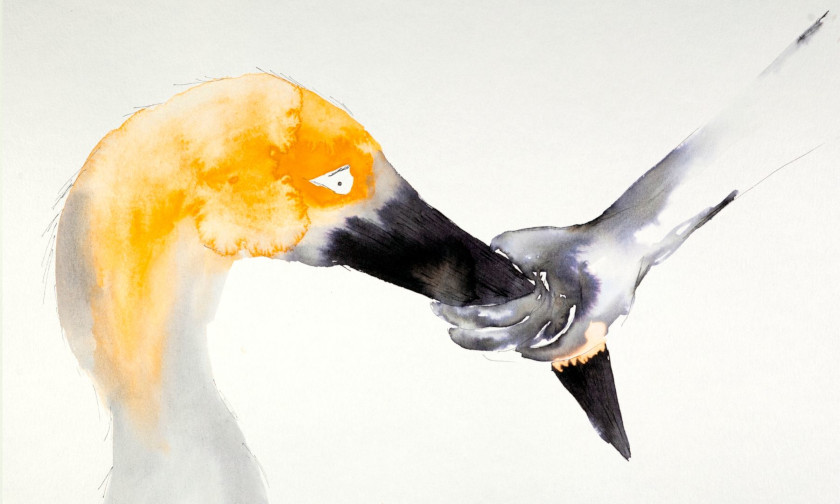A Gender Play: 'Flower Show' Animation Short - IFFR Interview with Elli Vuorinen
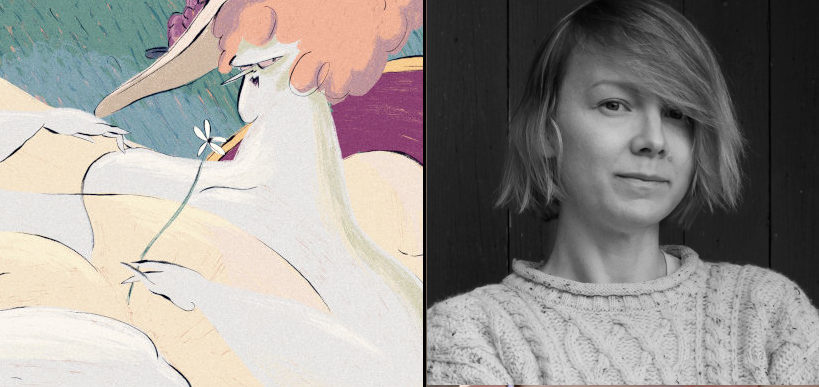
Based in rural Finland, Finnish animator Elli Vuorinen works across a diverse set of animation and fine arts techniques including stop-motion animation, hand-drawn animation, sculpture, and multichannel installation. A graduate of Turku Arts Academy’s animation program, her films have collected numerous awards across the festival circuit, the works ranging from the surreal to the humorous — and sometimes both. Among them, her hand-drawn computer-animated film ‘Sore Eyes for Infinity’ (2016) won the Grand Prix at Fest Anča, and her experimental stop-motion work ‘Still Lives’ (2019) received the Grand Prix at Fredrikstad Animation Festival. She also co-runs the production company Böhle Studios with her husband, Jani Lehto, who has created the music and sound design for nearly all of her films. Her sixth and newest short, ‘Flower Show’, is a colorful, striking, and social commentary-filled digitally drawn animation that just premiered at the 2024 International Film Festival Rotterdam (IFFR) as part of the Tiger Short Competition.
At IFFR, Zippy Frames sat down with Vuorinen to chat about ‘Flower Show’, her process, and her greater guiding principles as a filmmaker.
ZF: I read that the farm studio where you work allows you to play with different types of animation. Can you talk a bit about your process?
EV: It has been problematic because I'm always intrigued by something new. I never want to repeat the process the same way I did before. In animation, it's possible to always vary techniques and draw inspiration from other expressions of art and techniques. It's like a double-edged sword. It would be professionally more beneficial to stick to one style and technique. Then again, I haven't pursued this kind of career. I always have this gut feeling of what I want to do next and pursue that. Plus, the countryside setting that we have in Finland is really lovely. It's also difficult when there's a lot of stuff to renovate not only the workspaces, but our living premises. So there's always the lack of time to do. When we moved there, I did the stop-motion film ‘Still Lives’, which was driven by all the materials of stone, wood, fabric, and stuff like that. After that, I started to be ready to actually tackle a drawn animation again.
ZF: How did the idea for the ‘Flower Show’ come about?
EV: The idea grew from the countryside setting. I started gardening, and I saw myself as the kind of person who wants to rule nature. I saw gardening and the flowers as a metaphor for us as a society, that we want to determine how we raise our children. In a way, this became the setting for the whole film. And also my age — when I started this, I was also thinking that if I wanted to have children, then this would be the time. So all of these things — the setting where we live, my age — this was the starting point for this film now that I'm presenting here in Rotterdam.
Watch the 'Flower Show' trailer:
ZF: One of the things that stood out to me in ‘Flower Show’ was the character animation, the focus on the movement and shape, also varying between genders as well as adults and children. Could you talk a bit more about creating these characters and character archetypes specifically?
EV: The luscious countess woman looks like this kind of fertile, goddess-like creature, but she is barren. The fertile eggs [in the film] are empty and she has this emptiness inside of her. She urges for love and maybe some sort of fulfillment in her life. Her appearance is totally different from how she feels inside. For me, it was very important that the girl wouldn't be “too cute”, that she would have some sort of ugliness, some sort of edginess to her. She is not comfortable with her appearance that she has been dressed up like a doll. She’s not suited for it. She is in puberty, so she has these leg hairs, and she’s kind of tomboyish. Then there were these croquet-playing guys that have this kind of feminine aesthetic, and they are vogueing while playing croquet. So it was also a sort of gender play. Usually, there's the male gaze, but for the countess lady, they are the objects. There was this roleplay setting that I wanted to play out there.
ZF: The setting of the film evokes an old-timey feel. How does that play into the story for you?
EV: It’s this weird mishmash of a Victorian-esque time setting. I've just felt that time is the backdrop for where these kinds of social behaviors come from. In a way, we are still obeying these old norms, whether we want to or not. Also, in these times of wars and politics, and climate crisis, I feel that people nowadays want to feel nostalgic. Whether it's films and books or something like that, they just want to submerge into this kind of weird nostalgia. But I feel that this time period is somewhat dangerous, that those social structures are not good in our time, and we should continue looking forward and not backward. Also with gardening and nurturing of the kids, it would be more beneficial to see in more holistic ways.
ZF: Many of your films have no dialogue, and ‘Flower Show’ only has one line of spoken dialogue — “she loves me, she loves me not” — and it’s repeated throughout the film. Could you elaborate on your relationship with sound and dialogue in your work as a whole?
EV: I rarely use dialogue. It comes from when I was back in school and the Estonian director Priit Pärn taught us. We were not allowed to use dialogue. I was built to start the scriptwriting with just a story. I'm also a senior lecturer now at the school where I graduated, so I still keep underlining that. I feel that is a very good rule in animation. Many cases, when you start doing too much dialogue, it always interferes with the movement and the expression from the animation itself. With ‘Still Lives’, it’s full of text. But I feel that it's still not kind of a dialogue film because the characters are not speaking. The talk comes separately. As for sound, I'm married to my sound guy. We always start discussing the sound really early on, but I’m very strict. Of course, he can share his ideas, but he says that I'm the worst client ever. Because I always know what I want and what I don’t, but it’s lovely to have this kind of dialogue with him. We bounce ideas all the time, and it is very important. I know many directors where the sound just comes at the end. For me, sound is always hand-in-hand with the visuals.
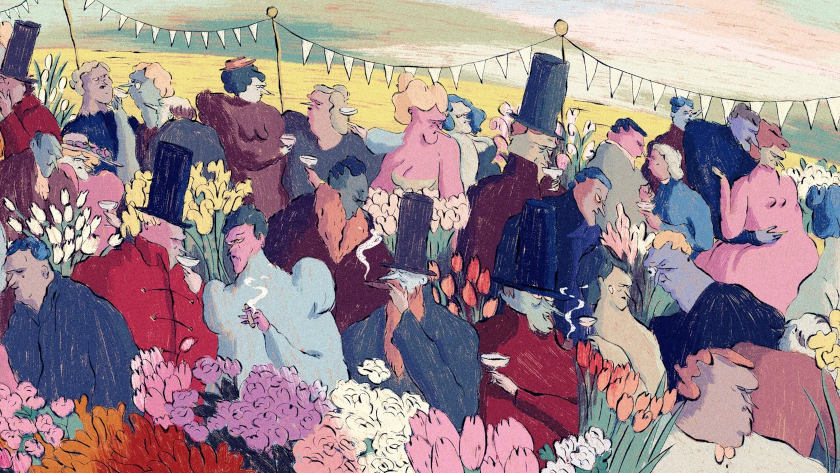
ZF: I’m curious as to whether you have a particular philosophy about the relationship between film and life. On your website, you say you adopt a “casual rhythm” to your filmmaking. Does that elicit anything relating to your filmmaking style, or perhaps how you think about film in relation to life itself?
EV: That’s a tricky one, because I always think about it, especially when I started teaching. I’ve been teaching for a couple of years now, and although it's part-time, I've noticed that I'm always so knackered. There's a lot of me that is concerned about where my career is now going. When we moved to the countryside, it was my idea that I could just work there. We had this slogan with Böhle that went, “Slow animation, slow sound, and slow living.” There was this brand thing going on with the slogan, but I don’t like it anymore because I don't want to brand myself. But it was this idea of not having any kind of hurry, and especially in the animation itself, it's so slow — you have to take your time to do it. I've been very driven doing my own stuff, and I feel that I haven't had a lot of time solely to live on the side. I'm also very interested in fine arts, and I've been doing a lot of installation work. I feel that spectrum is very interesting as well. The audience is totally different. What kind of animation you can do in that exhibition setting is very interesting as well.
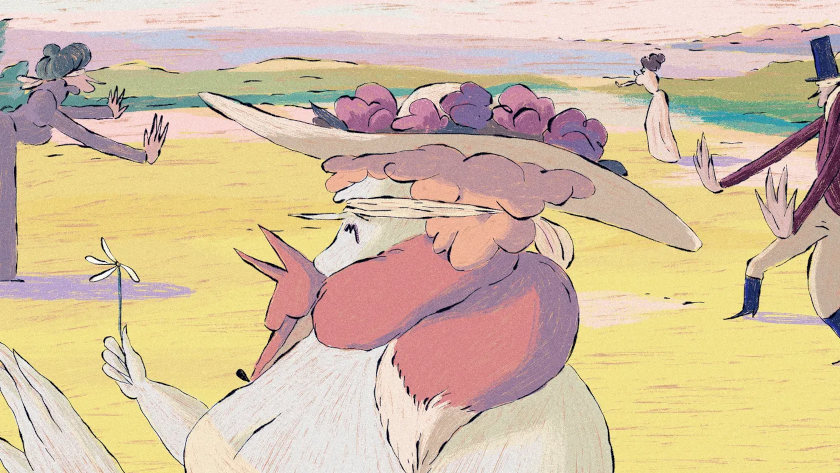
ZF: Can you elaborate on that? What do you think about the relationship between animation and installation, or animation within installation?
EV: With ‘Still Lives’, I did a one-channel version in the cinemas, and then I did this three-channel version from the same film. I felt that in some cases, it worked even better when it came to the exhibition setting. The film itself has these episodes, so it was kind of easy to make a looping structure. I have also done an interactive piece that has animation in it. I always work from an idea, whether it's a script or it's an art piece. Afterward, I think about what technique would suit it. It's lovely to also think that it doesn't have to be a film anymore. It can be a sculpture, and it can be some sort of installation with animation, or it can be a film. It opens up the spectrum so much more. I’ve noticed that after I have done these kinds of exhibitions, I feel that it also affects my script. I am not so narrative-driven anymore. Although ‘Flower Show’ is a narrative film, it has aspects that are not so easily readable. So I feel that these things are affecting me. I am curious myself, what are the next pieces going to be? Are they totally experimental? I don't know. But I feel that it's interesting. I haven't determined where to go next. And I feel that it’s also exciting.
contributed by: Olivia Popp




